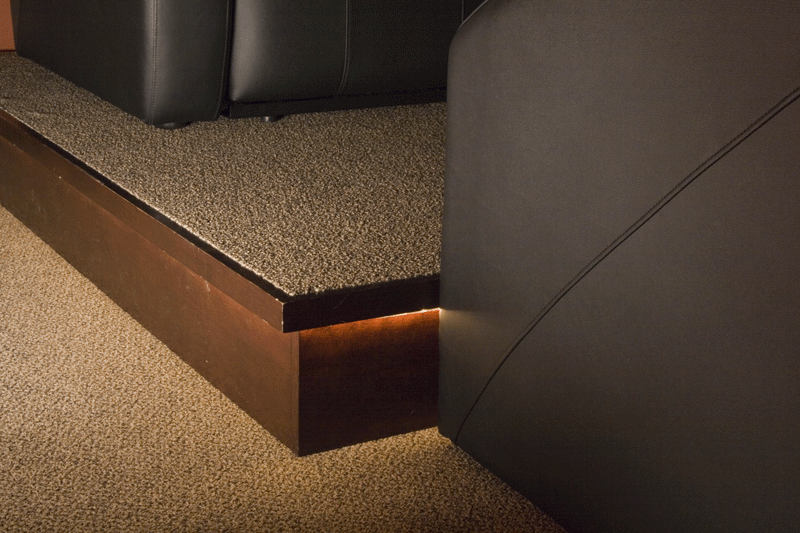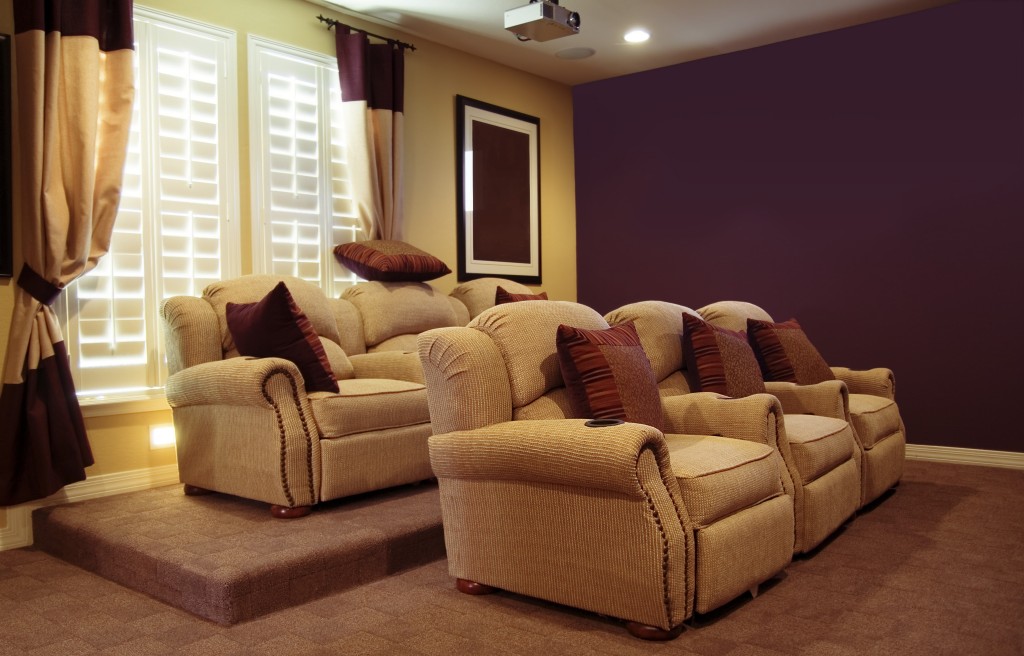
Having a home theater stage can complete your new home theatre setup. Not only can a flat standing stage make your media room appear grand and striking, it can also be very functional. Raise your home theater performance to new heights with a solid theater platform or stage.
All is Built on Sand
If you put your speakers or subwoofers on a hollow stage, it will cause sound to reverberate across the room. Enter Mr. Sandman. Line each cavity of the stage with a plastic liner so the sand doesn’t leak out, and then fill your stage with sand. Make sure it is leveled to the cavity of the stage. Use dry playsand instead of commercial sand. The latter is not safe as it contains silica dust, a known carcinogen. The skeleton of your stage should be sturdy – the frame should rest on at least two layers of 15 to 30-pound roofing felt and arranged into at least a 72-inch by 72-inch square. When placing the roofing felt, lay it flat evenly, and keep it leveled during installation of the laminate. Make sure that your subfloor and structure can support the weight, as you will be using lots of sand. Filling the stage with sand can be extremely labor intensive, but it will pay off eventually.
If you’re worried about the added weight and how to transport tons of sand, , a good alternative is fiberglass insulation and/or sound deadener materials (those used for automotive interiors). As far as density, use fiberglass insulation with a higher “R” value. Make sure to stuff the insulation snugly into each cavity of the stage.
Make the Stage Float
“Floating” refers to isolating the floor from the subfloor to diminish sound vibration. This technique is used in professional recording studios as a “sound deadening” method. Float the stage by placing rubber or vibration-insulation pads (you can get these at a supply store) between the floor and the stage. Cover it with a layer of plywood, a layer of felt, top it off with another layer of plywood, and finally cover it with carpet. Make sure to glue and screw the plywood together to prevent any creaking sounds on the floor. In addition, make sure to separate the stage from the walls. This will help lessen sound vibration. Keep the stage a quarter of an inch from the walls.
General Tips
- Make sure to use work gloves, safety glasses, and a dust mask for protection when constructing the stage.
- For filling the stage, you can use a combination of insulation and sand.
- Allow at least 3 hours for the completed stage to be fully dry.

